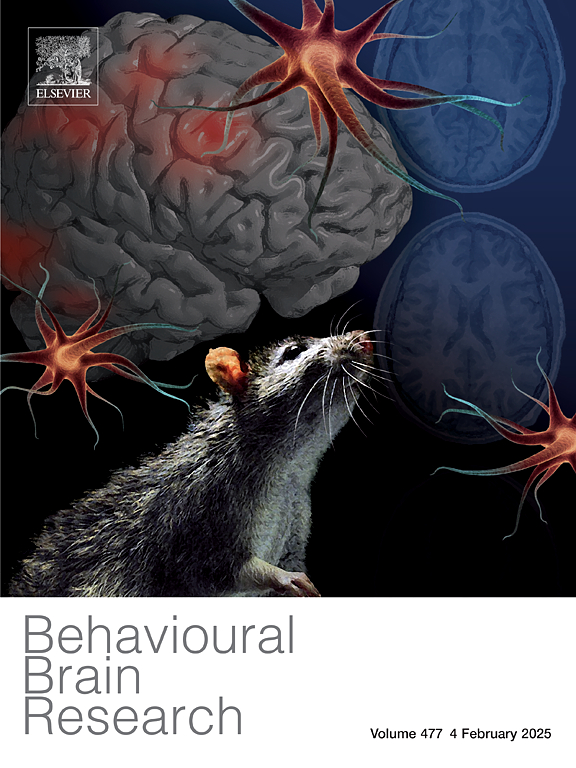社交焦虑症青少年加速衰老和免疫失调的表观遗传特征。
IF 2.6
3区 心理学
Q2 BEHAVIORAL SCIENCES
引用次数: 0
摘要
社交焦虑障碍(SAD)是一种普遍存在的精神疾病,具有显著的心理和社会经济后果。虽然其心理特征有充分的文献记载,但其潜在的分子机制仍然知之甚少,特别是在年轻人群中。本研究通过鉴定不同的DNA甲基化位点、途径富集模式和组织特异性表达谱来研究SAD的表观遗传基础。全基因组甲基化分析显示,名义上显著的CpG位点与SAD相关,映射到参与神经递质释放、突触功能和免疫调节的基因。组织富集分析表明,这些基因在大脑中对情绪和社会处理至关重要的区域,包括额叶皮层和前扣带皮层,优先被调节。此外,年轻SAD患者在表观遗传年龄加速和免疫细胞组成方面表现出显著差异,特别是在自然杀伤细胞计数方面。最后,共定位分析确定了与甲基化数量性状位点重叠的遗传变异,强调了SAD遗传风险因素与表观遗传修饰之间的潜在调控关系。这些发现为研究青少年SAD的分子结构提供了新的见解,为未来的研究和治疗开发提供了潜在的生物标志物和机制靶点。本文章由计算机程序翻译,如有差异,请以英文原文为准。
Epigenetic signatures of accelerated aging and immune dysregulation in youth with social anxiety disorder
Social anxiety disorder (SAD) is a prevalent psychiatric condition with significant psychological and socioeconomic consequences. While its psychological characteristics are well-documented, the underlying molecular mechanisms remain poorly understood, particularly in younger populations. This study investigates the epigenetic basis of SAD by identifying differential DNA methylation sites, pathway enrichment patterns, and tissue-specific expression profiles. Genome-wide methylation analysis revealed nominally significant CpG sites associated with SAD, mapping to genes involved in neurotransmitter release, synaptic function, and immune regulation. Tissue enrichment analysis demonstrated that these genes are preferentially modulated in brain regions critical for emotional and social processing, including the frontal cortex and anterior cingulate cortex. Additionally, individuals with young SAD exhibited significant differences in epigenetic age acceleration and immune cell composition, particularly in natural killer cell counts. Finally, colocalization analysis identified genetic variants that overlap with methylation quantitative trait loci, highlighting potential regulatory relationships between genetic risk factors and epigenetic modifications in SAD. These findings provide new insights into the molecular architecture of SAD in youth, offering potential biomarkers and mechanistic targets for future research and therapeutic development.
求助全文
通过发布文献求助,成功后即可免费获取论文全文。
去求助
来源期刊

Behavioural Brain Research
医学-行为科学
CiteScore
5.60
自引率
0.00%
发文量
383
审稿时长
61 days
期刊介绍:
Behavioural Brain Research is an international, interdisciplinary journal dedicated to the publication of articles in the field of behavioural neuroscience, broadly defined. Contributions from the entire range of disciplines that comprise the neurosciences, behavioural sciences or cognitive sciences are appropriate, as long as the goal is to delineate the neural mechanisms underlying behaviour. Thus, studies may range from neurophysiological, neuroanatomical, neurochemical or neuropharmacological analysis of brain-behaviour relations, including the use of molecular genetic or behavioural genetic approaches, to studies that involve the use of brain imaging techniques, to neuroethological studies. Reports of original research, of major methodological advances, or of novel conceptual approaches are all encouraged. The journal will also consider critical reviews on selected topics.
 求助内容:
求助内容: 应助结果提醒方式:
应助结果提醒方式:


